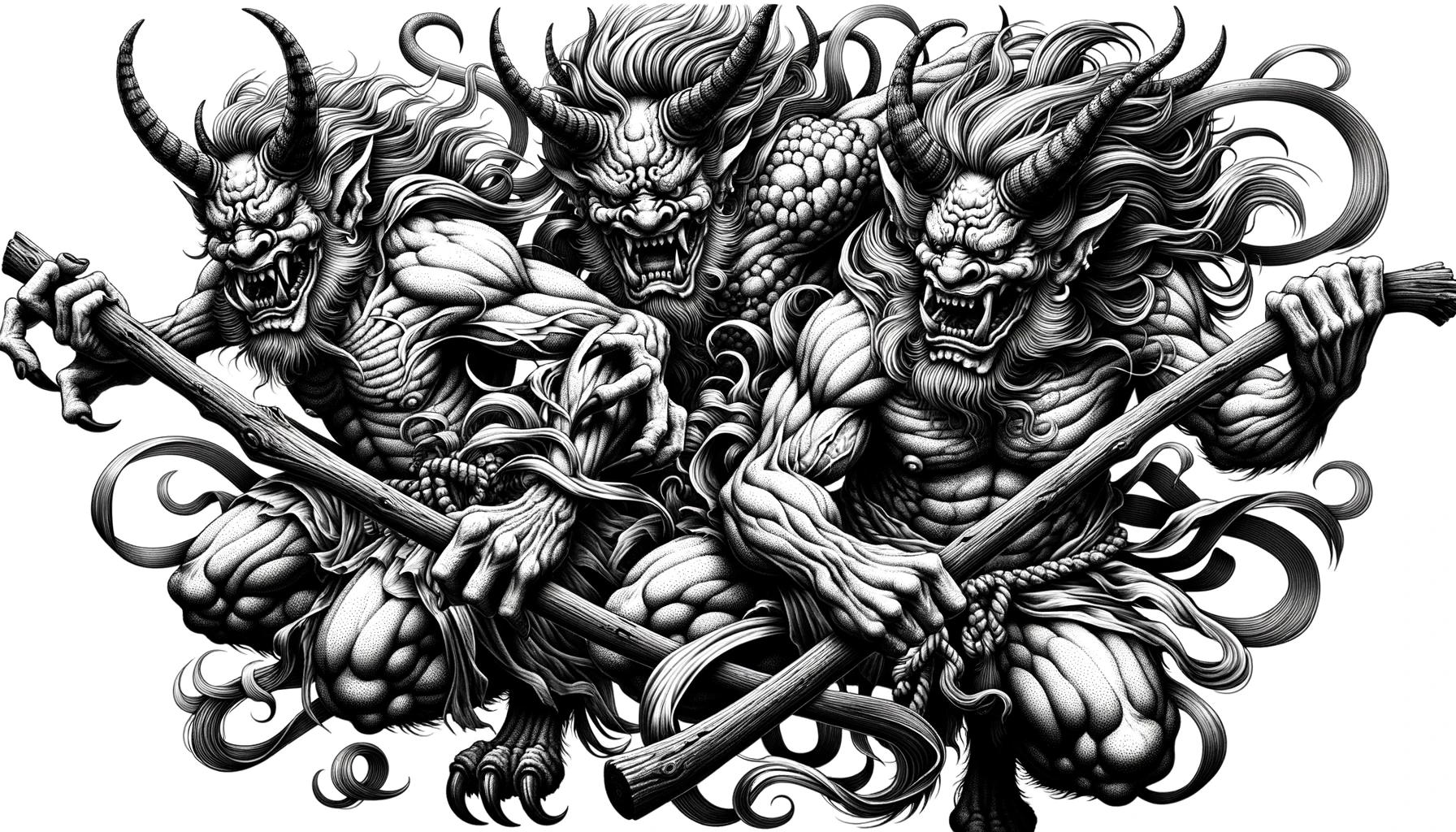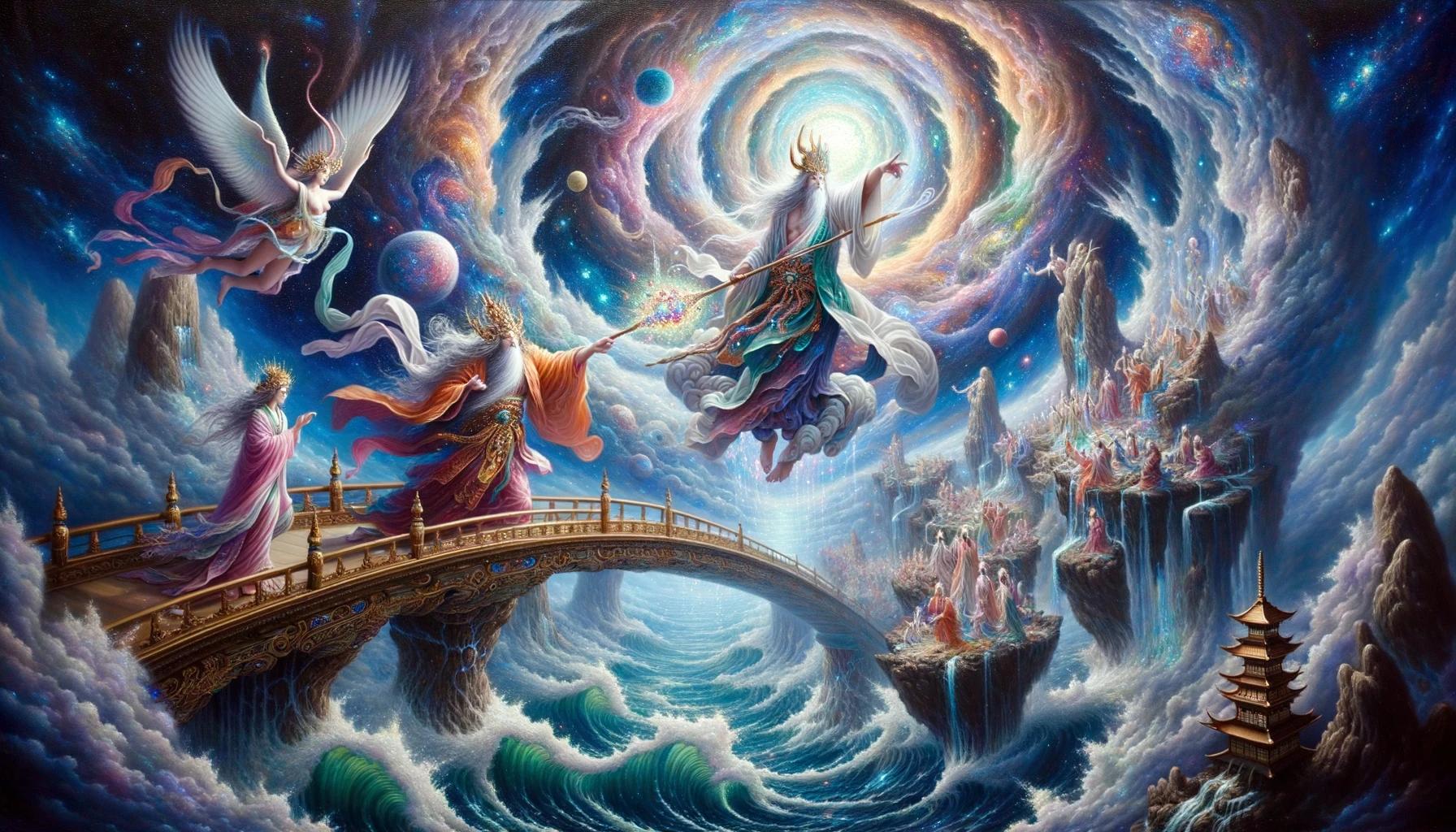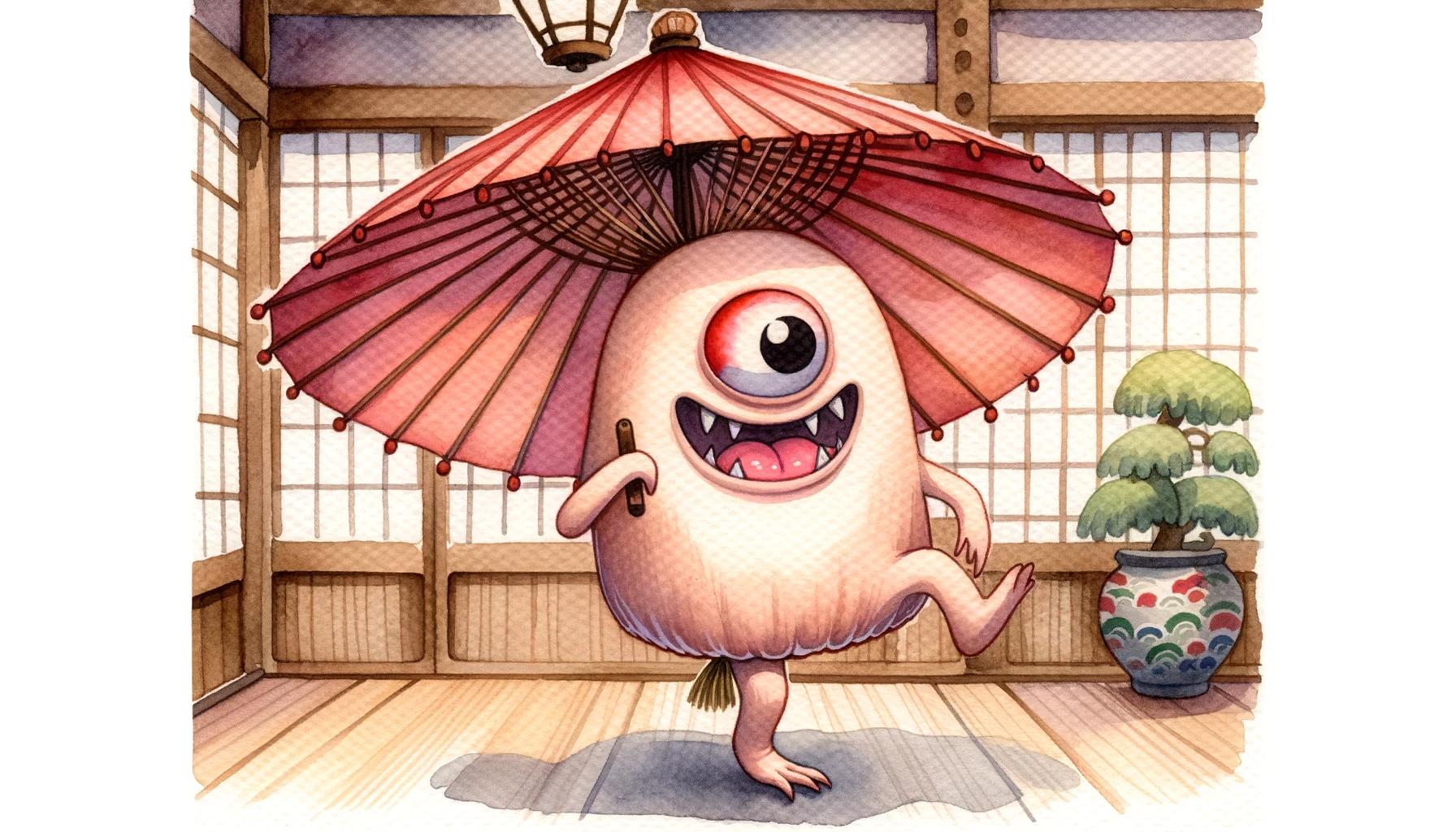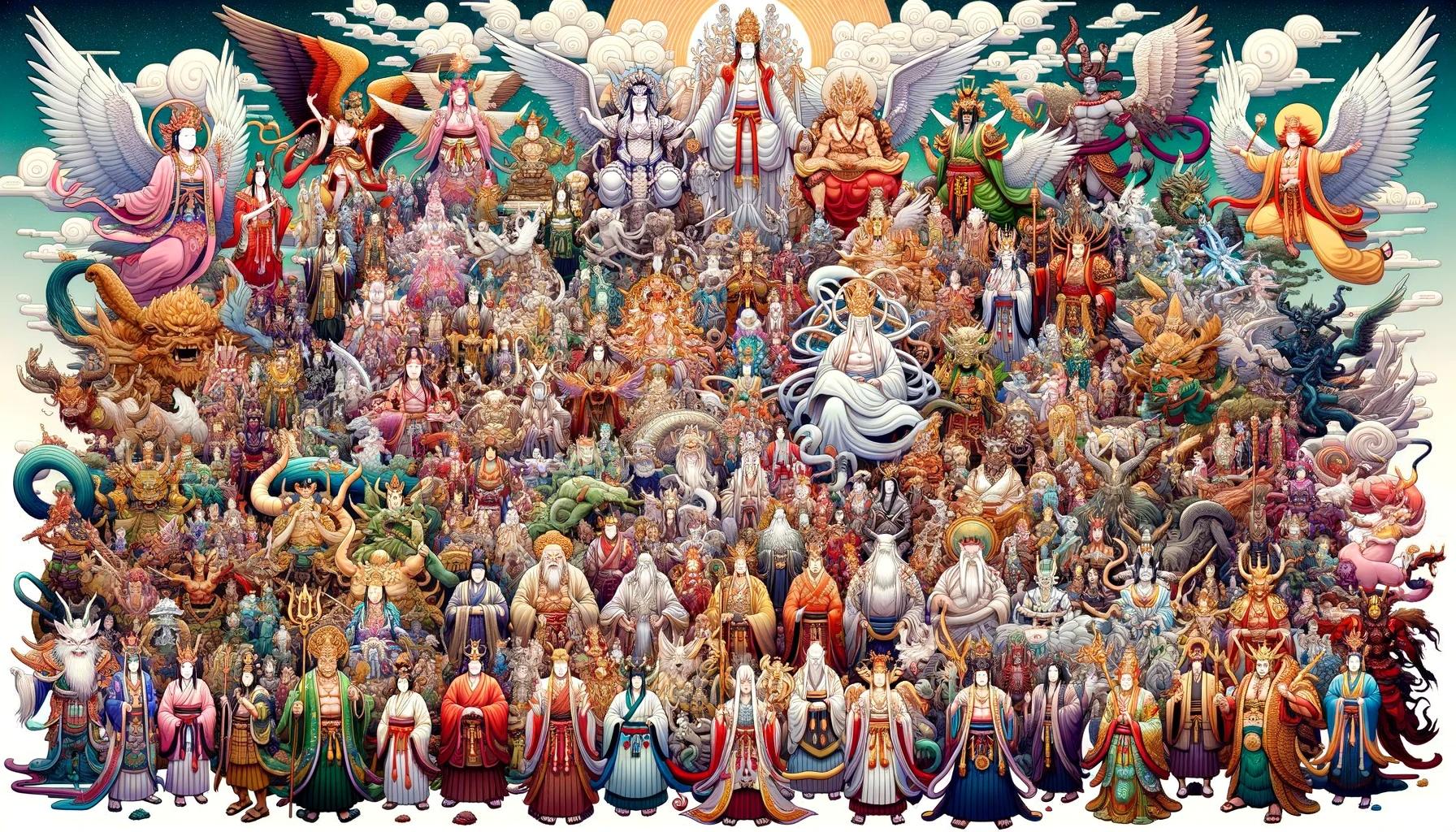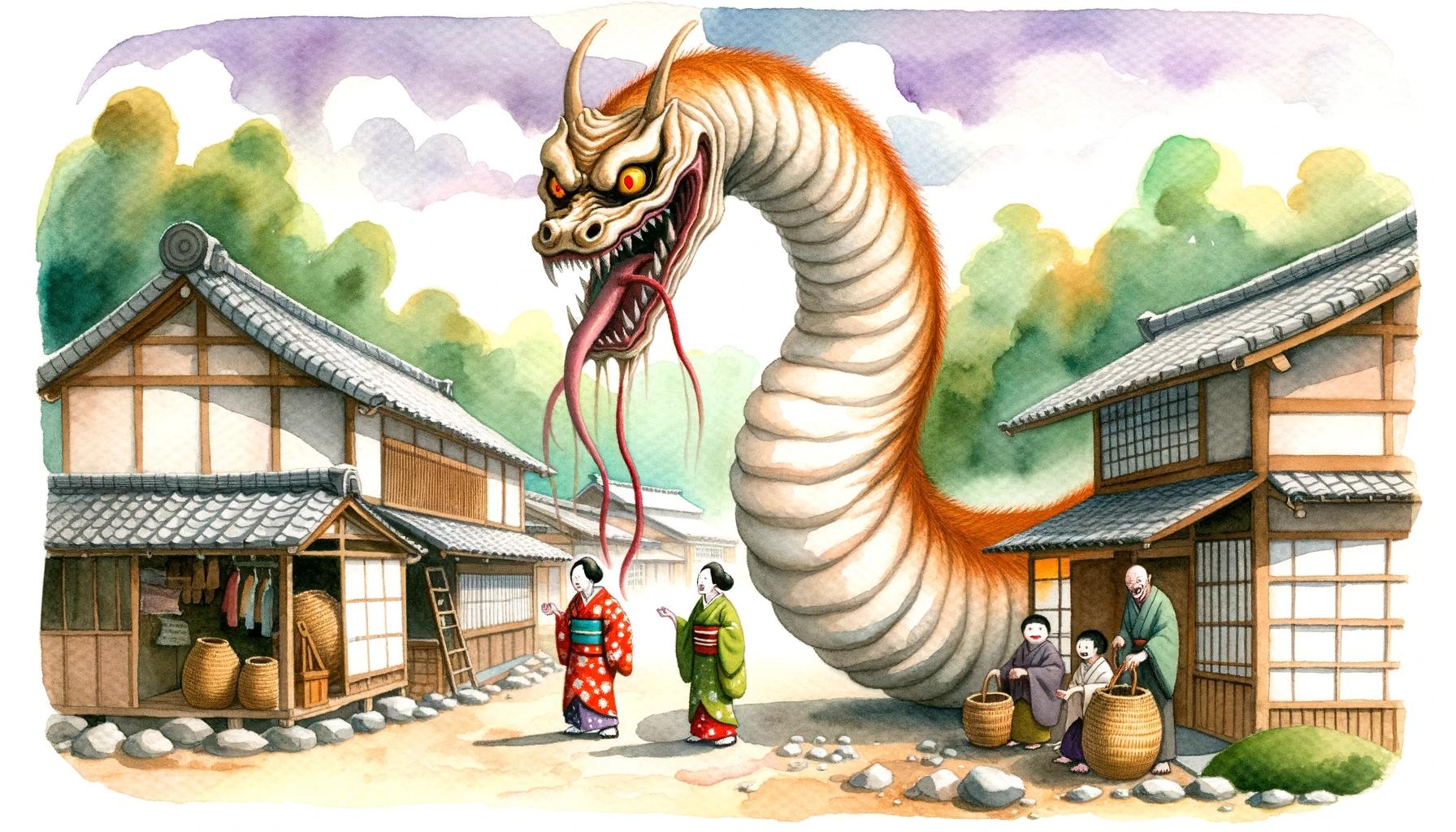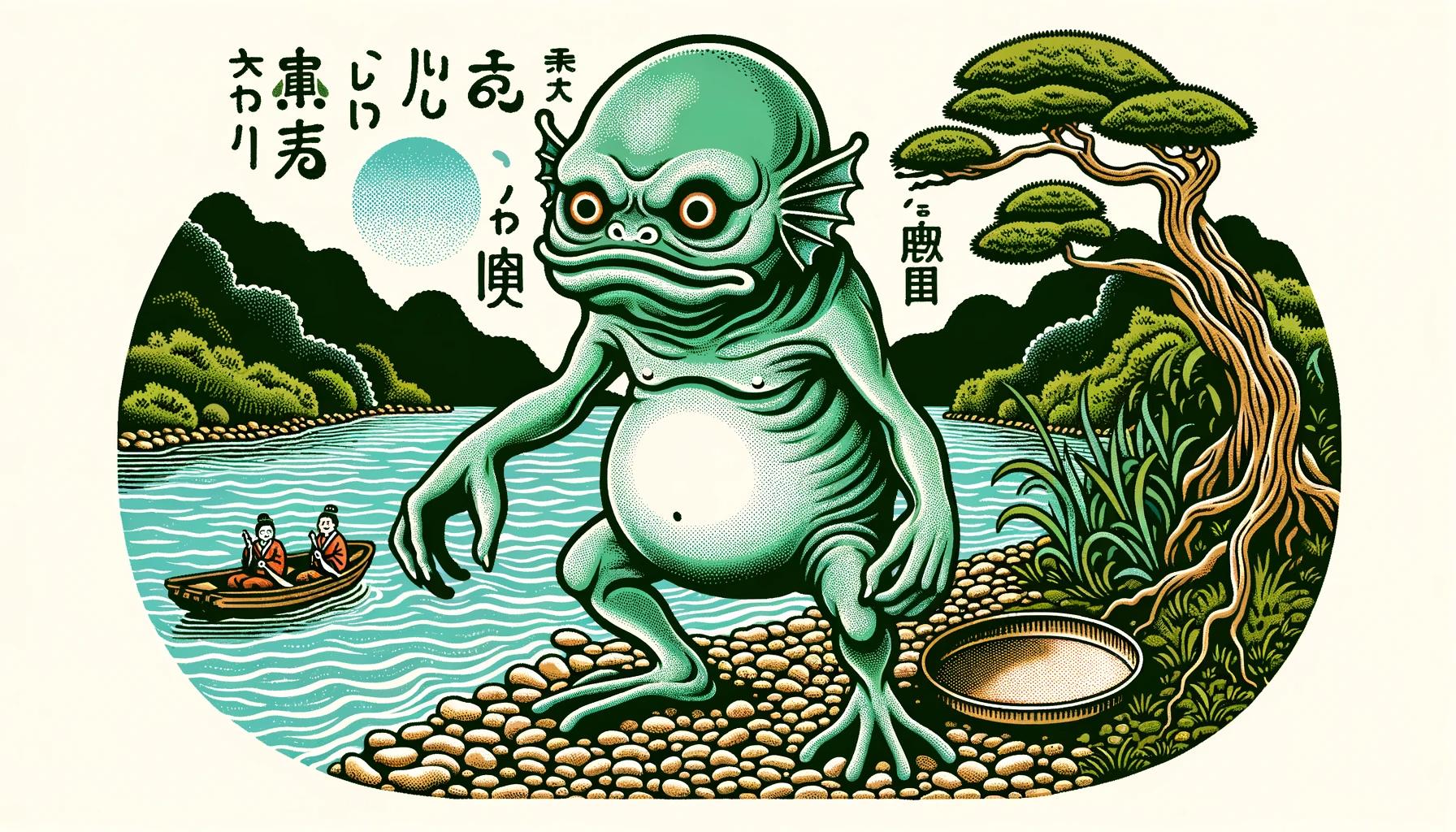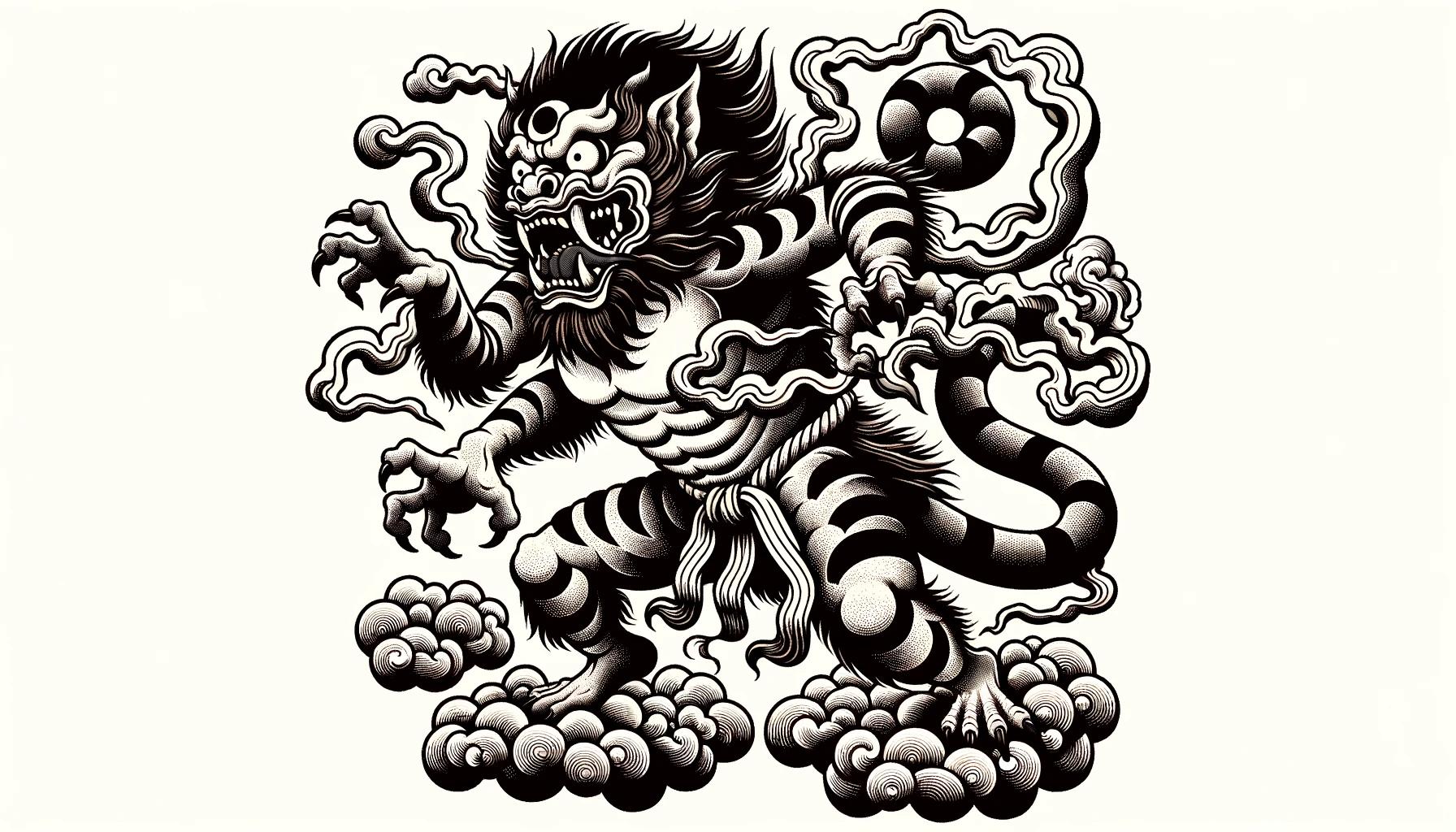Japanese Demons Oni: Legends, Folklore, and Cultural Significance in Japan
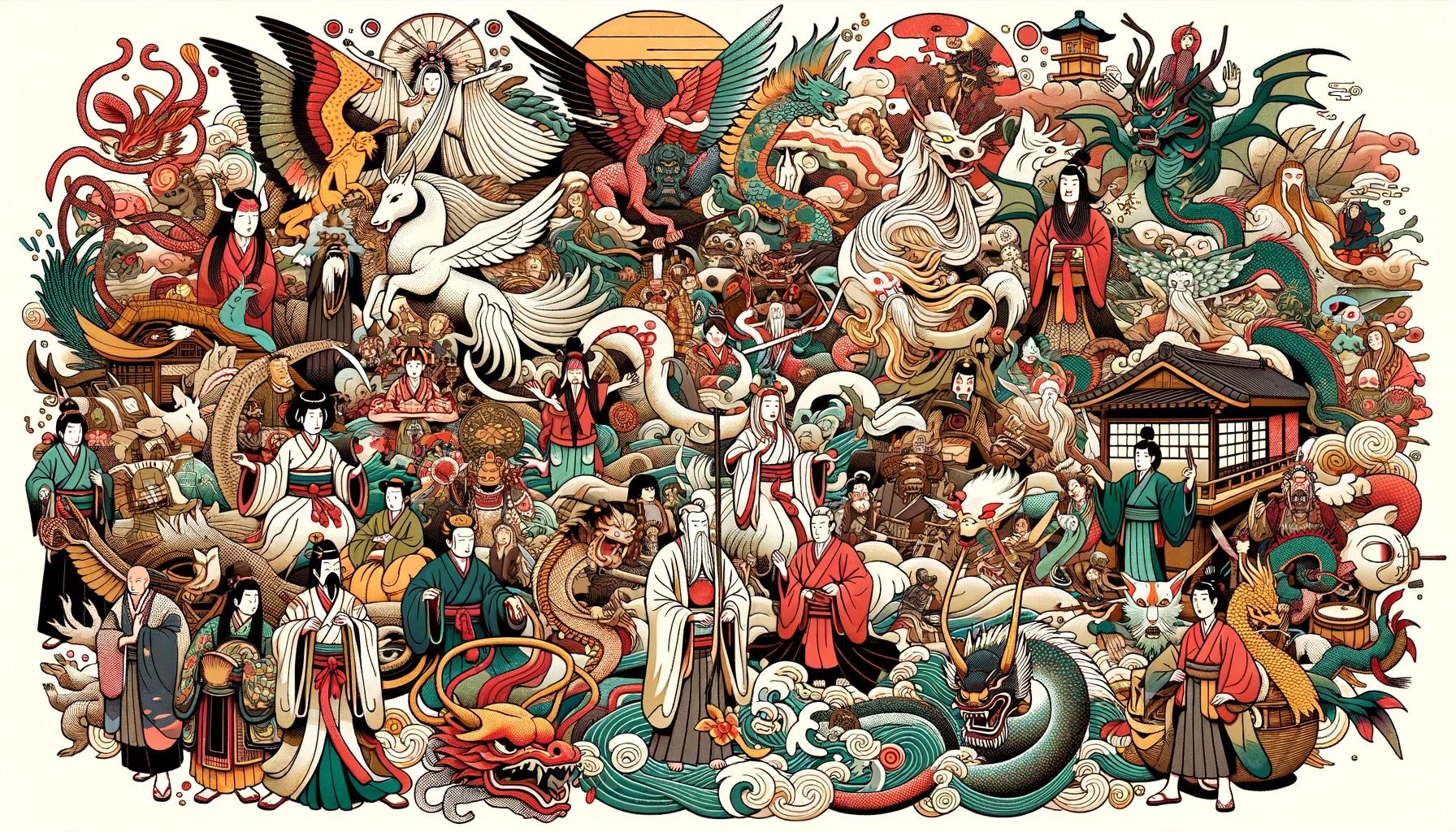
Japanese demons Oni are legendary and demonic creatures from Japanese mythology. They are believed to originate from Buddhist hell and are destined to punish sinners. Known for their terrifying appearance, they are taller than men and trees, with red, blue, or bluish-grey skin, wild hair, horns, and fangs.
Some even have three eyes and wear garments made of animal skins. Possessing superhuman strength, endurance, and magical abilities, Oni were traditionally depicted as fierce demons who devoured people in one bite.
However, their representation has evolved over time, appearing in various forms of art, literature, and theater in Japan. Nowadays, they are less terrifying and have become popular characters in Japanese culture, with new stories and interpretations emerging.
Origins of Japanese Demons Oni
The origins of Japanese demons known as Oni can be traced back to ancient times, steeped in mythological backgrounds that are integral to Japanese culture. Understanding the influence of Buddhist beliefs and the underworld, as well as the historical context and cultural significance, provides a deeper insight into the intriguing world of Oni.
Ancient Origins and Mythological Background
Ancient Japanese folklore tells tales of supernatural beings with otherworldly powers and terrifying appearances. These stories, passed down through generations, form the mythological background of Oni. Drawing inspiration from ancient legends and beliefs, Oni are both feared and revered for their association with punishment and the supernatural realm.
Influence of Buddhist Beliefs and the Underworld
Buddhism, with its teachings and beliefs about the afterlife, has played a significant role in shaping the concept of Oni. It is believed that these demon-like creatures originate from the infernal realms in Buddhist cosmology, tasked with punishing sinners.
The influence of Buddhist beliefs adds a spiritual dimension to the Oni folklore, intertwining it with the understanding of the underworld and the karmic consequences of one’s actions.
Historical Context and Cultural Significance
Within the historical context of Japan, the portrayal and perception of Oni have evolved over time.
Originally depicted as fearsome monsters devouring humans, they were used in literature to explain societal upheavals and calamities. Gradually, their representation shifted to include a more multifaceted role, where they became symbols of protection, chaos, and good fortune.
Today, Oni hold cultural significance as enduring icons in Japanese art, literature, and theater, embodying a rich and complex tapestry of folklore and belief systems.
What is Oni?
Oni, the legendary demons of Japanese mythology, possess a distinctive physical appearance and a rich cultural significance. Let’s explore the various aspects that define these enigmatic beings.
Physical Appearance and Characteristics
Oni are known for their terrifying visage, towering over men and trees with their intimidating stature.
They possess red, blue, or bluish-grey skin, wild hair, and sharp horns and fangs. They often wear garments made from the skins of large beasts, and some are even depicted with three eyes.
With their immense strength, superhuman endurance, and magical abilities, oni are formidable adversaries.
Oni in Japanese Folklore and Mythology
Oni have played a prominent role in Japanese folklore and mythological narratives. They are believed to originate from the Buddhist underworld and are considered as punishers of sinners. In ancient times, they were depicted as terrifying creatures that devoured humans at a single bite.
These tales served to explain natural disasters, wars, and famines. However, the legend of Shuten-dōji, Japan’s most famous and powerful oni, marked a shift in their portrayal.
Role as Punishers and Guardians
While oni are often associated with ferociousness and punishment, they are also believed to bring good fortune and riches.
In Japanese literature, oni were depicted as fearsome monsters, but they gradually started to be viewed as both villains and protectors. Their transformation from malevolent beings to guardians is symbolic of their complex role in Japanese culture.
Transformation and Symbolism in Japanese Culture
The transformation and symbolism of oni in Japanese culture are significant. They have appeared in various forms of artistic expression, including emakimono, noh, kabuki, and ukiyo-e. Oni’s appearances in traditional tales and their powerful imagery have influenced contemporary interpretations in literature, theater, and other art forms.
The symbolism associated with oni represents the duality of good and evil, fortune and calamity, embodying the cultural values and beliefs of the Japanese people.
Oni in Japanese Folklore
In Japanese folklore, Oni have been the subjects of many legends and are prominent characters in various traditional stories. They embody the fearsome and supernatural aspects of Japanese mythology, captivating audiences with their eerie presence and powerful traits.
Oni Legends and Famous Characters
Throughout Japanese folklore, numerous Oni legends have been passed down, showcasing their terrifying nature and extraordinary abilities. Stories often depict Oni as malevolent beings that bring chaos and punishment to those who deserve it.
Famous characters such as Shuten-dōji, the most renowned and powerful Oni in Japan, have become emblematic figures in Japanese mythology.
Oni in Folktales and Traditional Stories
Oni feature prominently in traditional Japanese folktales, where they serve as both antagonists and cautionary figures. These stories often illustrate moral lessons and teach the consequences of greed, wickedness, and other vices.
Oni are commonly portrayed as fierce adversaries who must be overcome through bravery, wit, or divine intervention.
Oni as Symbols of Good or Evil Fortune
Interestingly, Oni are not solely associated with malevolence in Japanese folklore. They are also regarded as symbols of fortune and protection in certain contexts. In some tales, Oni act as guardians of sacred spaces, defending them against evil spirits and bringing good luck to those who respect the balance of the spiritual realm.
Cultural Representations of Oni in Art and Literature
Oni’s presence extends beyond folklore and permeates various forms of Japanese art and literature. Their striking appearance and rich symbolism have inspired countless artistic expressions, from traditional woodblock prints and paintings to modern manga and anime.
Oni’s iconic visual elements, such as their distinctive horns and menacing expressions, continue to captivate audiences and leave a lasting impression on Japanese culture.
Oni in Contemporary Culture
In modern times, the presence and influence of oni can be seen in various aspects of Japanese pop culture and artistic expressions. From movies, anime, and manga to festivals, art, fashion, and adaptations, oni continue to captivate audiences and inspire creative interpretations.
Oni in Popular Culture: Movies, Anime, and Manga
Japanese demons oni have made significant appearances in popular media, including movies, anime, and manga. Their intimidating and intriguing characteristics make them compelling entities in storytelling. From classic movies like “Onibaba” to popular anime series like “Natsume’s Book of Friends” and manga titles like “Dorohedoro,” oni often serve as formidable adversaries or complex characters, adding depth and excitement to these forms of entertainment.
Oni in Japanese Festivals and Traditions
Japanese festivals and traditions often incorporate oni into their celebrations, particularly during events like Setsubun and Obon. During Setsubun, people throw roasted soybeans to drive away oni and bring good fortune for the upcoming year.
At the same time, the Obon festival honors departed ancestors, with oni masks and costumes used in traditional dances and performances. These festivities not only entertain but also preserve the cultural significance and folklore surrounding oni.
Oni in Modern Art and Fashion
The visual appeal of oni has also influenced modern art and fashion. Contemporary artists incorporate oni motifs in their artworks, exploring themes of strength, transformation, and duality. Additionally, oni-inspired fashion trends have emerged, incorporating elements such as bold patterns, vibrant colors, and avant-garde designs.
This fusion of traditional folklore with contemporary aesthetics showcases the timelessness and versatility of oni as cultural symbols.
Contemporary Interpretations and Adaptations
Continuously evolving, contemporary interpretations and adaptations of oni can be found in various forms of creative expression. Artists, writers, and storytellers explore oni’s symbolism and essence, reimagining their roles and narratives.
Whether through modern reinterpretations in literature, innovative visual representations, or inventive performances, these adaptations reflect a dynamic cultural dialogue and the ongoing relevance and allure of oni in Japanese society.
Oni: Cultural Impact and Influences
Oni, the legendary Japanese demons, have had a significant cultural impact in Japan and beyond.
Their influence can be observed in various aspects of Japanese society, ranging from language and idioms to traditional ceremonies, martial arts, theater, and even international perceptions and adaptations. In this section, we will explore the wide-ranging impact and fascinating influences that Oni have had over the years.
Oni’s Influence on Japanese Language and Idioms
- The menacing presence of Oni has permeated the Japanese language, giving rise to various idioms and expressions. Phrases like “Oni no tegata” (the devil’s handprint) and “Oni no nembutsu” (to chant Buddhist invocations insincerely) are some examples of how Oni have shaped linguistic expressions.
- Idioms tied to Oni often convey notions of fear, danger, or deception, showcasing the deep-rooted influence these mythical creatures have had on Japanese communication and culture.
Oni’s Role in Traditional Ceremonies and Rituals
- Oni’s fearsome image is often utilized in traditional ceremonies and rituals to ward off evil spirits or bad luck.
Festivals like Setsubun, where participants throw roasted soybeans to chase away Oni, are a prime example of how Oni are integrated into Japanese cultural practices.
- These rituals not only serve as a way to preserve cultural traditions but also highlight the belief in the protective power of Oni and their role in maintaining prosperity and well-being within the community.
Oni in Japanese Martial Arts and Theater
- The formidable strength and supernatural abilities associated with Oni have influenced various forms of Japanese martial arts.
Techniques inspired by Oni’s striking and powerful movements can be found in disciplines like Sumo and certain styles of Karate, showcasing the enduring impact of Oni in physical combat disciplines.
- In traditional Japanese theater, particularly the art forms of Noh and Kabuki, Oni play prominent roles as both antagonists and symbols of malevolent forces.
These performances serve to captivate audiences with the otherworldly presence and fearsome nature of Oni.
International Perceptions and Adaptations of Oni
- Over time, Oni’s popularity and allure have transcended Japanese borders, finding their way into international culture and artistic creations. From movies and literature to video games and anime, Oni have become fascinating subjects for creative interpretations.
- International adaptations often reimagine Oni within different cultural contexts while still retaining their core characteristics.
These adaptations serve to highlight the universality of human fascination with mythical creatures and the enduring appeal of Oni as captivating beings.
Oni: Folklore and Mythology Across Japan
Oni have woven themselves deeply into the rich tapestry of Japanese folklore and mythology. Their presence varies across different regions, giving rise to diverse local legends and beliefs. Let’s explore the fascinating regional variations, cultural significance, and enduring legacy of oni across Japan.
Regional Variations and Local Legends
- Oni legends take on unique characteristics in different regions of Japan.
- In northern Japan, the oni are often portrayed as fierce and malevolent creatures that bring harsh winters and blizzards.
- Southern regions depict oni as guardians and patrons of local communities, offering protection against natural disasters.
- Each region has its own distinct oni stories, adding to the rich tapestry of Japanese folklore.
Oni’s Connection to Specific Geographical Locations
- Specific locations in Japan hold deep connections to oni mythology.
- Mountains, caves, and remote areas are often associated with oni as their dwelling places.
- Temples and shrines in these regions may have dedicated spaces to worship and appease the oni spirits.
- These connections create a sense of mystique and wonder around the oni legends in these particular areas.
Folk Beliefs and Superstitions Related to Oni
- Across Japan, various folk beliefs and superstitions are intertwined with oni lore.
- Many believe that oni possess the power to ward off evil spirits and bring good fortune.
- It is common for households and businesses to display oni masks or statues as protective charms.
- Certain rituals and practices are performed to appease the oni and ensure their benevolent influence on daily life.
Oni’s Legacy in Japanese Cultural Heritage
- Oni’s presence can be felt in various aspects of Japanese cultural heritage.
- Traditional festivals, such as Setsubun, feature rituals and performances centered around warding off oni and welcoming good luck.
- Art, literature, and theater continually draw inspiration from oni mythology, reflecting oni’s ongoing presence in the cultural fabric of Japan.
- Oni motifs and symbols can be found in traditional crafts, such as pottery, textiles, and lacquerware, serving as a reminder of their enduring significance.
Oni: Contemporary Interpretations and Artistic Expressions
Oni, the legendary Japanese demons, have not only been influential in traditional folklore and mythology but have also found their place in contemporary interpretations and artistic expressions.
From literature and poetry to music and dance, from visual arts to fashion and design, Oni continue to inspire and captivate artists and creators.
Oni in Contemporary Literature and Poetry
In modern literature and poetry, Oni have been explored as complex and multi-dimensional characters, delving into their inner struggles and psychological depths.
Writers and poets often use Oni as metaphors for inner demons, exploring themes of conflict, redemption, and self-discovery. Their formidable presence and supernatural abilities create a potent blend of fear and fascination in literary works that engage readers and challenge their perceptions of good and evil.
Oni’s Influence on Japanese Music and Dance
The influence of Oni can be seen in various genres of Japanese music and traditional dance forms. Taiko drumming, with its thunderous intensity and powerful rhythms, often incorporates imagery of Oni to evoke a sense of primal energy and strength.
In traditional Japanese dance, Oni-inspired movements and costumes bring these mythical creatures to life, showcasing their ferocity and dynamism on stage.
Contemporary Oni Artworks and Commissions
Artists today continue to create stunning visual representations of Oni through a wide array of mediums and styles. From intricate paintings and illustrations to sculptures and digital art, contemporary artists explore the visual aesthetics of Oni while adding their unique creative visions.
Oni-themed commissions are sought after, capturing the attention of art collectors and enthusiasts worldwide, who appreciate the rich symbolism and striking imagery associated with these mythical beings.
Oni-inspired Fashion and Design Trends
Oni have also left a significant impact on the world of fashion and design.
Their distinct appearance, characterized by horns, fangs, and vibrant colors, has inspired clothing lines, accessories, and makeup trends. Oni masks have become popular fashion statements, blending traditional Japanese aesthetics with modern styles.
Designers and fashion enthusiasts embrace the bold and fierce nature of Oni, incorporating their essence into avant-garde and streetwear designs that push the boundaries of convention.
In conclusion, Oni’s presence extends beyond traditional folklore, permeating contemporary literature, music, dance, visual arts, and fashion.
Their dynamic and multifaceted nature continues to inspire artists, invigorate artistic expressions, and contribute to the rich tapestry of Japanese culture and creativity.
Oni Encounters and Experiences
Exploring the realm of Oni encounters and experiences provides a glimpse into the supernatural and mystical aspects of Japanese folklore. Countless personal accounts and urban legends have been shared over the years, captivating the imagination of many.
Let’s delve into some of the intriguing subtopics within this realm.
Personal Accounts and Urban Legends
Within Japanese culture, there are numerous personal accounts of encounters with Oni, passed down through generations. These stories often involve individuals witnessing eerie sightings, unexplained phenomena, or even direct confrontations with these legendary creatures.
Urban legends further amplify the mystery and fear surrounding Oni, adding to their enduring fascination.
Supernatural Phenomena and Hauntings
Supernatural phenomena and hauntings associated with Oni are recurring themes in folklore and ghost stories throughout Japan. Tales of haunted locations, possessed objects, and unexplainable occurrences often feature these powerful demonic entities.
Oni’s connection to calamities and their ability to wield dark magic contribute to the mystique surrounding their presence.
Oni Sightings and Folklore Communities
Groups of enthusiasts, folklore communities, and paranormal investigators exist to document and discuss Oni sightings or alleged encounters. These communities contribute to the preservation and exploration of Oni-related folklore, sharing knowledge and investigating reported sightings in specific regions.
The collective effort helps unravel the intricate tapestry of Oni legends across Japan.
Exploring the Paranormal: Oni Investigations
As interest in the paranormal continues to grow, individuals and organizations conduct dedicated investigations into the existence and nature of Oni. Utilizing various tools, such as EVP (electronic voice phenomena) recorders, EMF (electromagnetic field) detectors, and infrared cameras, these investigations aim to capture evidence of Oni’s presence in haunted locations.
These endeavors offer unique insights into the supernatural world of Japanese demons.
Throughout history, Japanese demons known as Oni have held significant cultural and mythological importance in Japan. These legendary creatures have deep roots in ancient beliefs and folklore, representing forces of punishment and guardianship.
Oni’s historical significance can be summarized by examining their origins, influence on Buddhist beliefs, and association with calamities and wars.
Oni’s Origins and Mythological Background
The origins of Oni can be traced back to ancient Japanese mythologies, where they were believed to emerge from the Buddhist underworld. These malevolent beings were depicted as powerful punishers destined to wreak havoc on sinners.
Their fearsome appearance, with their towering stature, red, blue, or greyish skin, wild hair, and menacing horns, created a lasting impression on Japanese folklore and art.
Oni’s Ongoing Presence in Japanese Culture
Despite being considered villains in Japanese mythology, Oni have maintained a presence in contemporary Japanese culture. Their representation has evolved over time, becoming less terrifying and more diverse. Oni continue to captivate the imagination of people through their appearances in literature, theater, festivals, and various artistic expressions.
Oni in Contemporary Literature and Poetry
Oni’s influence transcends traditional folklore and finds a place in modern Japanese literature and poetry. Writers and poets draw inspiration from Oni to explore themes of good versus evil, the supernatural, and human nature.
The enduring legacy of Oni in literary works reflects their ongoing cultural significance in Japan.
Oni’s Influence on Japanese Music and Dance
Oni’s presence is also felt in Japanese music and dance. Traditional Japanese performing arts showcase elaborate costumes and mesmerizing choreography inspired by Oni. Drumming performances, such as the iconic “Onidaiko,” evoke the raw power and energy associated with these mythical beings.
Contemporary Oni Artworks and Commissions
In the realm of visual arts, Oni serve as a muse for contemporary artists. Their distinct features and symbolism are explored through various art forms, including paintings, sculptures, and digital art.
Oni-inspired artworks are appreciated for their ability to evoke a sense of awe, mystery, and cultural heritage.
Oni-inspired Fashion and Design Trends
The influence of Oni extends to the realm of fashion and design. From fashion runways to streetwear, Oni-inspired motifs and designs have found their way into modern clothing and accessories.
The bold and unique aesthetic of Oni has become a source of inspiration for designers who seek to merge traditional Japanese elements with contemporary style.
Final Thoughts and Reflections
The continued presence of Oni in Japanese culture showcases their enduring appeal and cultural significance. From their mythical origins and their portrayal in folklore to their impact on contemporary art forms and fashion trends, Oni remain an integral part of Japan’s rich cultural heritage.
Their complex symbolism and ever-evolving representations ensure that the legacy of Oni will continue to captivate audiences both in Japan and around the world.
.

